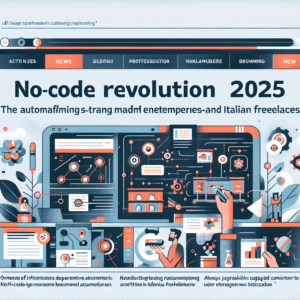An old English sailor proverb says: “A calm sea has never made a good sailor”.. A calm sea has never made a good sailor..
Despite the calm morning breeze and the bright sun that often accompany our commute to work, there are mornings when entering the office (or connecting with it) gives you the same feeling that the helmsman feels tied to his rudder under the relentless fury of the elements; if you strain your ears, if you listen carefully, the slapping of the waves on the sides, the sinister creaking of the ship's masts called to a fierce challenge by the elements, the white wall of water, foam, clouds and lightning, that angry nothingness full of dangers that presents itself to the helmsman's eyes when the waves become insurmountable mountains, you feel it all inside yourself.
Will we live? Will we survive? Will we disappear beneath the waves?
When will we wake up in the morning and realize that some PNRR funds have reached the company bank account?
Your bank manager continues to welcome you into his office, preciously furnished, with the same old spiel... "It would be a good idea to reduce the exposure a little..."
This is where the weakest sailors disappear beneath the waves along with the planking of a wrecked hull, sometimes surrounded by very large and hungry sharks.
Raise your head! As Lorenzo da Ponte wrote for the libretto of Mozart's The Marriage of Figaro: “A gun on your shoulder, a sword at your side / a straight neck, a bold face / a large helmet, or a large turban / much honor, little cash!”
Don't let the negativity injected into the market by so-called "experts" become the disease that you will later self-diagnose.
Don't let your company be among the unlucky ones, that is, those led by a pessimistic and/or opportunistic boss.
Forget about the government, the aid, the lost funds (but shouldn't this very definition be what makes real entrepreneurs run away?), the consortia with three leaders who take home all the meat and forty slaves who work below the cost line, the diplomatic-commercial expeditions, the councilors, the honorable members, the diplomats...
That whole world – honeyed and flowing between diplomacy, politics and the administration of other people’s money – does what it does because it doesn’t know how to produce; they make you waste precious time; they are not part of the solutions, but of the problem; they cannot give you solutions, and it is the solutions that you need now.
And there is only one solution: STRENGTHEN YOUR COMPANY, just as the wise and experienced Captain orders his men to do when a storm looms on the horizon.
You do your job, don't leave your desk to run after politicians in a moment of despair; it would be equivalent to untiing yourself from the helm in the middle of a storm and kneeling down to pray on the deck while the ship takes on a thirty-degree list. The first wave would sweep you to the bottom of the ocean.
Don't lose focus, keep doing your job.
We will all emerge from this recession when leaders focus on authentically and intrinsically strengthening their companies.
One of the most powerful tonics, like horse blood extract still hidden in the recesses of childhood memories of many of us, is called Business Process Management (BPM).
BPM, passing through its most recent ancestor (BPR, Business Process Reengineering) has its roots in the late nineteenth century, when the concerns of Fredrick Winslow Taylor were the real starter of a progression of studies that has never stopped for 125 years; "how can I improve processes to be more productive?", Taylor asked himself, focusing - at that time - only and exclusively on production environments.
Since then, the question has remained the same, but the focus has broadened to include all company processes, from production to design, from administrative to commercial, from logistics to staff; to everything that has a minimal influence on building company profits, including dynamic and continuous communication with external and fundamental players, such as customers and production partners.
Since the 1980s, the giants of the IT industry, starting with IBM, have felt the need to make BPR an essential part of their business operations; this is how battleships that were now enormous and difficult to govern, real pachyderms that were, at that time, close to immobility due to excessive bureaucracy, have been transformed into agile fleets of light vessels (i.e. medium-sized companies each focused on a certain business) that today make up the various groups that lead not only the IT markets, but the global industrial apparatus as a whole.
If today there is no longer THE General Motors with its huge losses but THE General Motors GROUP with its constant profits, and the same can be said for all the protagonists in every sector, it is thanks to Business Process Reengineering, and subsequently to Business Process Management, which have put in the hands of those who managed those enormous and complex structures all the tools to simplify, rationalize, reorganize and make more efficient.
And if it was a positive influence for GM, do you want it not to be a positive influence for your company?
Let's talk about it.
BPM represents a very pragmatic approach to redefining and managing business operations; the problem here is not whether the work is done or not, but how it is done; a baker who has a boy who is entrusted with the task of taking bread to the bars and restaurants in the village in the morning, would do well to correct the boy's route if he notices that the boy, instead of going straight to the customer, first stops to say hello to his girlfriend, then to drink coffee, then to buy cigarettes and - finally - at his leisure, heads to his final destination; this will not only be an optimization of time, but also an improvement of image towards the customer, who will see the bread delivered earlier in the morning and still hot, and who - improving the reputation of the baker - will in turn procure other customers to serve whom - by optimizing the routes of the boy - there will be all the time necessary during the morning.
A concise example like the one just mentioned helps to understand how the optimization and rational management of business processes, even the simplest ones, has two inevitable and immediate effects: the convenience of the customer and – by extension – the greater success and reduction of costs of the company in which BPR/BPM are applied.
And it is precisely from the highlighting of some fundamental aspects of synthesis that a good BPM takes off.
The first step is represented by the analysis of the fundamental aspects that generated the existence of the company.
What is our mission?
Are we pursuing her?
Is this still a current mission? Should we redefine it?
Are our current strategic goals aligned with our mission?
Who are our customers?
What do they want from us?
Why are they our customers and not someone else's?
Why aren't other people's customers our customers?
The outlining of these basic assumptions could result in a total misalignment of the organization's turnover with respect to its original mission, as in those cases in which the profits of atypical product lines take precedence over those of the original product; in such an eventuality it would be wise to think about a redefinition of the mission, which - in fact - far from being a mere philosophical exercise, ends up dictating the guidelines of investments within the budget-plan.
During this basic assessment, however, we may also be able to understand the underlying reasons why we hold some customers and not others, or the degree of adherence of corporate strategists (typically, managers) to the task given to them by shareholders.
Once the organization's mission and strategic objectives are clear, the reengineering effort must necessarily focus on the processes that are responsible for ensuring that the entire company achieves profit, or even – if you like – the steps and procedures that govern the ways in which company resources are used to create products and services designed to meet the needs of particular customers or markets.
A business process can typically be broken down into a series of specific activities that can be measured, reshaped, and improved; even eliminated individually or in groups.
Process reengineering identifies, analyzes and redesigns the most intimate processes of the organization with the aim of achieving decisive improvements in performance, in terms of quality, costs and the ability of the entire organization to meet delivery commitments on time.
It is important to remember how the internal processes of an organization – which, as we have already highlighted, can usually be broken down into individual activities – are carried out in cooperation between different specialized areas of the organization itself, precisely because of the individual activities into which they are broken down.
Of all these areas, too often none can be considered directly responsible not only for the process in which it participates by giving a limited contribution, but even for the very activity it oversees in its entirety.
One of the cornerstones of Business Process Management is precisely in not stopping at the mere reorganization of the individual activities that make up a business process, but in pushing forward, until making the entire process - sum and result of the activities that compose it - organic to a part responsible for it and its continuous improvement; only this is the way to reach a reorganization, and subsequently to internal quality processes that generate real benefits for the organization, but above all for its customers.
The above model provides a philosophical framework within which to rethink the organization's mission and the processes needed to achieve it; these processes, in turn, lead to the execution of management decisions that are based on available information; the available information is – of course – improved by the maximum possible availability of up-to-date technological resources. The decisions, in turn, guide the work processes in order to ensure the achievement of the company's mission.
It is important to remain fully aware of this general order of things at every moment of our reengineering process.
Revitalizing a company requires management to refocus on how to help the organization achieve its mission; in this sense, an extremely effective tool can be an analysis set up as follows:
“Given the current economic situation, what are the strengths and opportunities that we can capitalize on in the short term, as well as in the long term?”
Starting with this kind of awareness will help everyone to see the future with greater positivity, in order to generate ideas and solutions useful for the turning point.
Only after your organization has identified its strengths should you proceed to analyze its weaknesses.
You will have to proceed with pragmatism and consistency, eager to build within your company a “knowledge base” fueled by the experiences of each of your collaborators; too often – especially in small and medium-sized businesses – management claims the paternity – sole and unshareable – of “good” decisions. These are shortcuts for weak managers.
Choose the path of widespread strength:
1) Situation analysis
2) Objectives
3) Strategie
4) Action plan
5) Action
6) Measuring impacts
Your organization may continue to be a shell tossed about by the waves of a stormy ocean like the one we are experiencing at this difficult juncture, or it may progressively gain total control of the navigation and become one of the organizations that will emerge first from the storm; the decision is yours.
All your company needs right now is your desire to change, plus a realistic plan to make that desire a reality (plus, of course, a commitment from your entire management team to make it happen).
An ancient Arab proverb says, “A journey of ten thousand kilometers begins with a single, simple step.”
Move that foot.
If you don't feel confident in what you're doing, ask for help, but be careful not to ask for it from people who are completely unrelated to the world of production, who are waiting for you at the pass to vampirize your money; ask for help from those who have already done a lot of BPR/BPM.
What can be considered your new success at the end of this fiscal year rests solely and exclusively on your shoulders, and on your desire to achieve it.







